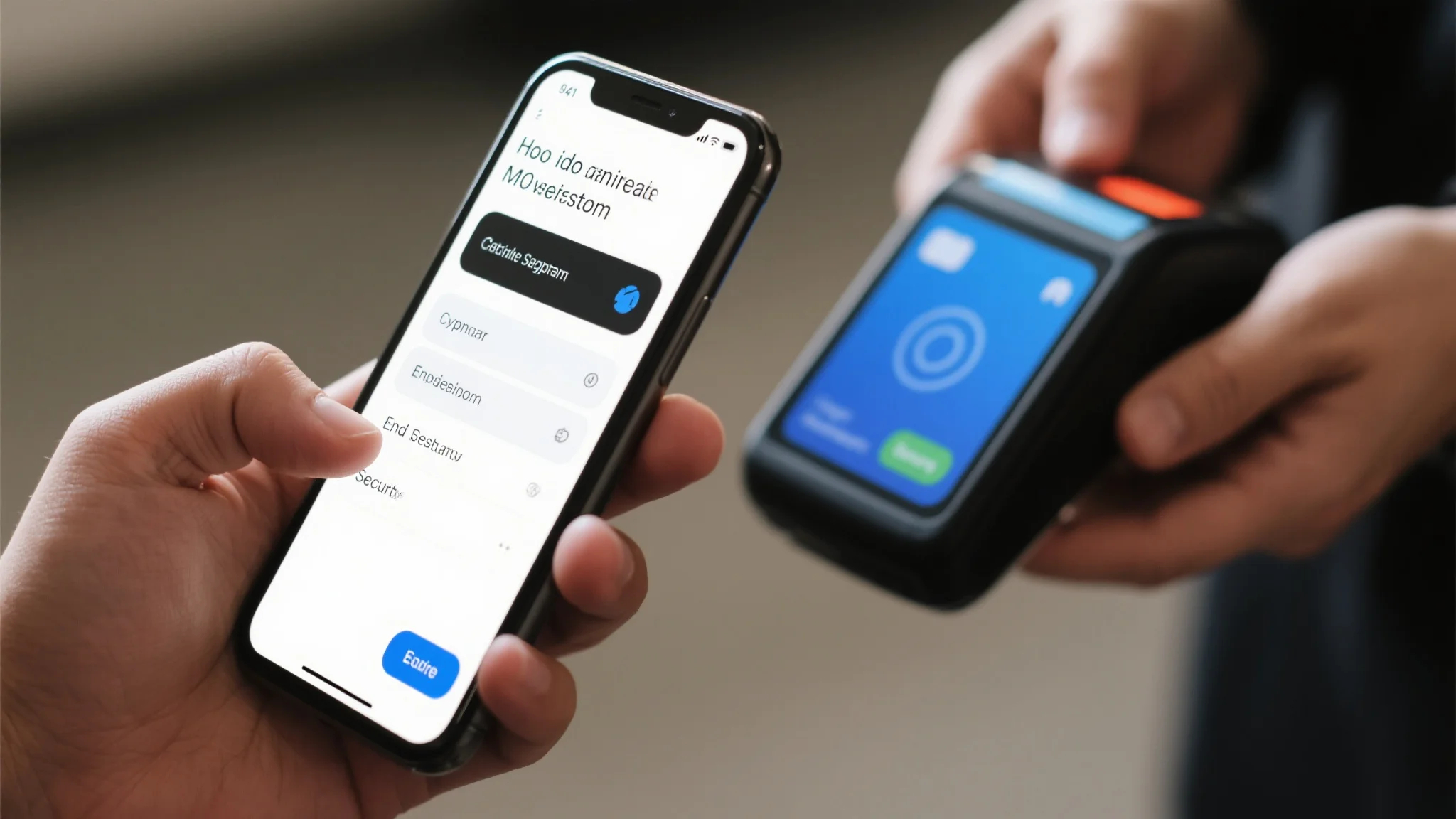In recent years, the global payment landscape has undergone a seismic shift. With the rise of mobile technology, businesses are no longer confined to traditional payment methods. Instead, they are embracing mobile-first payment strategies that offer unparalleled convenience, efficiency, and security. This transformation is not just a trend; it is a necessity for enterprises aiming to stay competitive in an increasingly digital world.

The Rise of Mobile Payments
Mobile payments have become a ubiquitous part of modern life. From paying for groceries using a smartphone app to settling bills through digital wallets, consumers are gravitating toward mobile payment solutions. According to a report by Grand View Research, the global mobile payment market size was valued at USD 6.5 trillion in 2022, and it is projected to grow at a compound annual growth rate (CAGR) of 20.3% from 2023 to 2030. This exponential growth underscores the growing preference for mobile payments among consumers.
Enterprises, recognizing this shift, are aligning their payment strategies with consumer behavior. By adopting mobile-first payment solutions, businesses can cater to the demands of tech-savvy customers while streamlining their operations. Mobile payments not only enhance the customer experience but also provide enterprises with valuable data insights, enabling them to make informed business decisions.
Enhanced Security: A Game-Changer
One of the primary reasons enterprises are moving toward mobile-first payment strategies is the enhanced security they offer. Traditional payment methods, such as cash and credit cards, are prone to fraud and theft. In contrast, mobile payments leverage advanced security features, such as encryption, tokenization, and biometric authentication, to safeguard sensitive data.
Tokenization, for instance, replaces sensitive card information with a unique token during transactions, reducing the risk of data breaches. Biometric authentication, which uses fingerprint or facial recognition, adds an extra layer of security, ensuring that only authorized users can access payment systems. These features make mobile payments significantly more secure than traditional methods, giving businesses and consumers greater peace of mind.
Moreover, mobile payment platforms often employ real-time fraud detection mechanisms. These systems analyze transaction patterns in real-time, flagging suspicious activities and alerting users or issuers before any significant damage occurs. This proactive approach to security is a game-changer for enterprises, helping them protect their financial assets and maintain customer trust.
The Convenience Factor
Convenience is another driving force behind the adoption of mobile-first payment strategies. Mobile payments allow consumers to make purchases instantly, without the need for physical cards or cash. This seamless experience is particularly appealing in today’s fast-paced world, where time is of the essence.
For enterprises, mobile payments also simplify the checkout process. By integrating mobile payment solutions into their systems, businesses can reduce wait times, minimize errors, and improve overall transaction efficiency. Additionally, mobile payments enable businesses to accept payments in multiple channels, from in-store to online, ensuring a consistent and omnichannel customer experience.
The Role of Digital Transformation
The shift toward mobile-first payment strategies is deeply intertwined with the broader trend of digital transformation. As enterprises strive to modernize their operations, they are increasingly adopting technologies that enhance agility, scalability, and innovation. Mobile payments fit perfectly into this digital transformation journey, enabling businesses to deliver modern, customer-centric solutions.
By embracing mobile payments, enterprises can also foster innovation within their organizations. Mobile payment platforms often come with built-in analytics tools, allowing businesses to track transaction trends, customer behavior, and revenue streams in real-time. These insights can be leveraged to refine business strategies, optimize operations, and drive growth.
The Future of Payments: Mobile-First
As mobile technology continues to evolve, so too will mobile payment solutions. The integration of emerging technologies, such as blockchain, artificial intelligence (AI), and the Internet of Things (IoT), is expected to further enhance the capabilities of mobile payments. For instance, blockchain-based payment systems can provide greater transparency and traceability, while AI-powered systems can offer personalized recommendations and predictive analytics.
Enterprises that adopt mobile-first payment strategies today are positioning themselves for long-term success. By staying ahead of the curve, they can meet the evolving expectations of their customers, reduce operational costs, and strengthen their competitive edge in the market.
The Evolution of Payment Security
Security has always been a top priority in the payment industry, but the rise of mobile payments has introduced new challenges and opportunities. Traditional payment methods, while secure in their own right, are limited by the physical nature of cards and cash. Mobile payments, on the other hand, leverage cutting-edge technology to create a more robust and dynamic security framework.
One of the key innovations in mobile payment security is the use of end-to-end encryption. This technology ensures that all data transmitted during a transaction is encrypted, making it impossible for hackers to intercept or decode. Additionally, mobile payment platforms often use multi-factor authentication (MFA) to verify user identities, adding another layer of protection against unauthorized access.
Another significant advancement in payment security is the adoption of biometric authentication. Fingerprint scanning, facial recognition, and voice authentication are now common features in mobile payment systems. These biometric technologies not only enhance security but also provide a more convenient and user-friendly experience.
The Role of Regulators in Payment Security
Regulators play a crucial role in ensuring the security of mobile payment systems. Governments and regulatory bodies around the world have introduced stringent guidelines and standards to safeguard consumer data and prevent fraud. For example, the Payment Card Industry Data Security Standard (PCI DSS) is a widely recognized framework that outlines the requirements for secure payment transactions.
Enterprises adopting mobile-first payment strategies must comply with these regulations to avoid legal penalties and protect their reputation. Compliance not only ensures security but also builds trust with customers, who are increasingly concerned about the safety of their financial information.
The Importance of User Education
Despite the advanced security features of mobile payment systems, user education remains a critical component of payment security. Many consumers are still unaware of the risks associated with mobile payments or the steps they can take to protect themselves.
Enterprises can play a vital role in educating their customers about mobile payment security. This can include providing clear instructions on how to set up secure passwords, enabling biometric authentication, and recognizing suspicious transactions. By empowering users with knowledge, businesses can help reduce the risk of fraud and enhance the overall security of their payment systems.
The Future of Mobile Payment Security
As mobile payments continue to grow in popularity, the focus on security will only intensify. Enterprises must stay ahead of emerging threats and adopt proactive measures to protect their systems. This includes investing in advanced security technologies, such as AI-driven threat detection and machine learning algorithms, to identify and mitigate risks in real-time.
Collaboration between businesses, regulators, and technology providers will also be essential in shaping the future of mobile payment security. By working together, stakeholders can develop innovative solutions that address current challenges while anticipating future threats.
The shift toward mobile-first payment strategies is not just a response to consumer demand; it is a strategic move for enterprises looking to thrive in a digital-first world. Mobile payments offer enhanced security, unparalleled convenience, and valuable data insights, making them a cornerstone of modern business operations.
As mobile technology continues to evolve, so too will the capabilities of mobile payment systems. Enterprises that embrace this transformation today will be better positioned to navigate the complexities of tomorrow’s payment landscape. By prioritizing security, innovation, and customer experience, businesses can unlock the full potential of mobile-first payment strategies and drive sustainable growth in an increasingly competitive market.
This concludes the article on why enterprises are moving toward mobile-first payment strategies with enhanced security.
